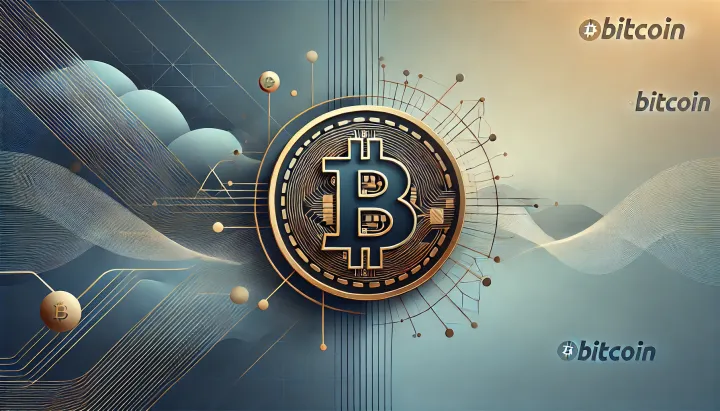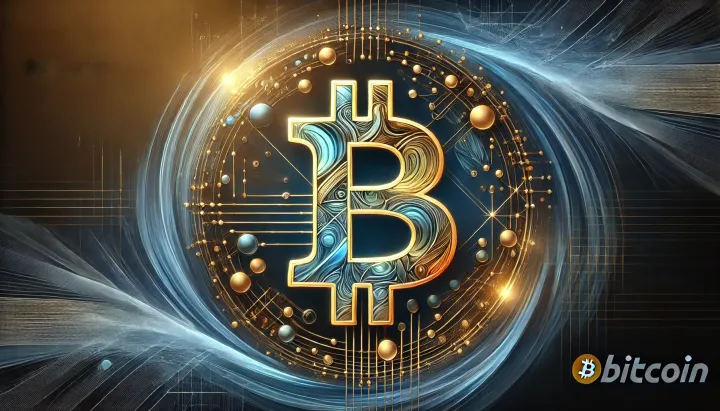Bitcoin: Energy, Policy, and Adoption Dynamics
On March 29, 2025, the Robin Seyr Podcast featured Jason Deane discussing Bitcoin’s role in overcoming stagnant wages, high energy costs, and evolving regulatory frameworks.

- My 'briefing notes' summarize the content of podcast episodes; they do not reflect my own views.
- They contain (1) a summary of podcast content, (2) potential information gaps, and (3) some speculative views on wider Bitcoin implications.
- Pay attention to broadcast dates (I often summarize older episodes)
- Some episodes I summarize may be sponsored: don't trust, verify, if the information you are looking for is to be used for decision-making.
Summary
On March 29, 2025, the Robin Seyr Podcast featured Jason Deane discussing Bitcoin’s role in overcoming stagnant wages, high energy costs, and evolving regulatory frameworks. Deane detailed innovations in UK energy market integration and secure asset management, drawing parallels to early Internet adoption. The conversation underscores Bitcoin’s potential to reshape financial and operational landscapes.
Take-Home Messages
- Financial Independence: Bitcoin offers an alternative to stagnant wages and inflation-driven financial insecurity.
- Energy Integration: Innovative mining models that leverage grid-balancing can transform high-cost energy environments.
- Secure Ownership: Emphasizing self-custody is critical to maintaining Bitcoin’s decentralized security.
- Regulatory Shifts: Government discussions on Bitcoin reserves signal a potential reordering of national financial strategies.
- Growth Trajectories: Parallels with Internet adoption suggest robust long-term network effects for Bitcoin.
Overview
Jason Deane explains that Bitcoin serves as a countermeasure to stagnant wage growth and inflation, positioning it as a tool for achieving financial independence. He emphasizes that traditional income growth is insufficient in the current economic climate, pushing individuals toward alternative investment strategies.
The discussion turns to the challenges posed by the UK’s energy distribution model, where high electricity costs and grid inefficiencies hinder cost-effective Bitcoin mining. Deane outlines innovative approaches that repurpose mining operations to provide ancillary grid-balancing services, highlighting a potential model for sustainable operations.
Deane stresses the importance of secure self-custody practices, noting that low adoption rates compromise long-term asset security. He contrasts institutional accumulation strategies with retail investment behaviors, explaining how these differences may influence overall market dynamics.
Government policy emerges as a critical theme, with debates over incorporating Bitcoin into strategic reserves. Deane draws parallels between Bitcoin’s adoption curve and the early growth of the Internet, suggesting that network effects could drive future mass adoption.
Stakeholder Perspectives
- Individual users demand accessible, secure solutions for managing their Bitcoin assets.
- Institutional investors require regulatory clarity and stable acquisition channels.
- Mining companies seek innovative operational models to overcome high energy costs.
- Policymakers are focused on balancing innovation with national financial stability.
- Technology entrepreneurs view integration with energy markets as a pathway for new business models.
Implications and Future Outlook
The integration of Bitcoin mining with grid-balancing services could reshape energy markets by transforming excess power into a valuable asset. This approach may drive sustainable mining practices and attract significant industrial investment. Such innovations are likely to influence global operational standards for both energy and Bitcoin mining sectors.
Regulatory developments, such as the discussion of Bitcoin as a strategic reserve, could redefine national financial policies. Clear guidelines and supportive policies may encourage institutional adoption and enhance market stability. Policymakers are poised to play a key role in bridging the gap between innovative technology and established financial systems.
The evolving adoption curve, paralleling early Internet growth, suggests that Bitcoin may experience rapid network effects. Increased public awareness and improved self-custody practices can drive broader acceptance. This dynamic has profound implications for decentralized financial ecosystems and long-term economic resilience.
Information Gaps
- What are the prospects for governments incorporating Bitcoin as a strategic reserve asset? This question is critical due to its significant policy and geopolitical implications. It addresses potential transformations in national financial strategies and long-term economic stability.
- What policy reforms could mitigate inefficiencies in the UK’s single-price energy model to support Bitcoin mining? This question directly tackles operational challenges that impact mining scalability. It holds importance for shaping regulatory frameworks and improving economic viability in high-cost energy environments.
- What factors contribute to the low adoption rate of self-custody practices among Bitcoin users? This is vital because secure asset management is fundamental to maintaining Bitcoin’s decentralized nature. It highlights gaps in user education and technology uptake that could compromise network security.
- How do early adoption curves of Bitcoin compare with historical trends observed during the Internet’s growth? This question is significant for forecasting Bitcoin’s long-term growth potential and market penetration. It provides valuable insights for strategic planning based on network effects.
- What operational innovations can enhance Bitcoin mining scalability in regions with high electricity costs? This is crucial as it addresses the economic challenges posed by expensive energy markets. It explores technological advancements that can improve profitability and sustainability in Bitcoin mining.
Broader Implications for Bitcoin
Bitcoin as a Strategic Reserve Asset
Governments considering Bitcoin for national reserves could fundamentally alter global monetary policies. Broader adoption at the state level may shift traditional reserve assets like gold, affecting international trade dynamics. This trend has the potential to redefine financial sovereignty and economic influence.
Integration with Energy Markets
Innovative models that combine Bitcoin mining with grid-balancing services could revolutionize energy distribution. Efficient utilization of excess power may lower operational costs and promote renewable energy adoption. Such integration could drive new partnerships between energy providers and technology innovators.
Scaling and Operational Efficiency
Advances in mining technology and operational innovations are critical to overcoming high energy costs. Improved scalability can make Bitcoin mining more economically viable in regions with challenging energy markets. This efficiency boost may accelerate global Bitcoin adoption and investment.
Adoption Trajectories and Network Effects
Comparing Bitcoin’s growth to early Internet adoption provides insights into its potential expansion. Accelerated network effects could drive mainstream acceptance and create new economic opportunities. This trajectory underscores the importance of strategic planning in capitalizing on emergent technologies.
Secure Self-Custody and Decentralization
Improving self-custody practices is essential to preserve Bitcoin’s decentralized ethos. Enhanced security protocols can boost user confidence and prevent asset vulnerabilities. This focus on security is critical for sustaining long-term trust in decentralized financial systems.



Comments ()